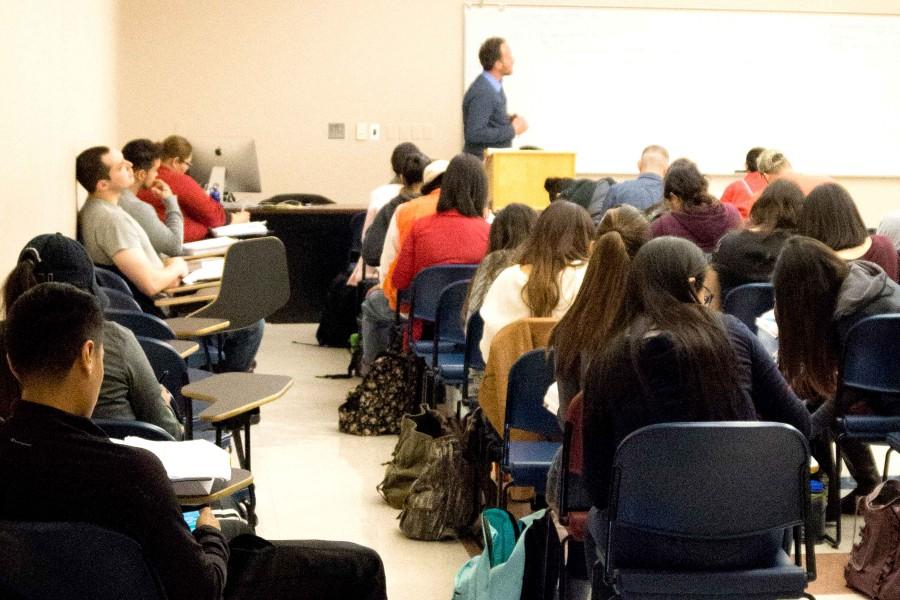Before each semester at UTEP, students try to enroll in classes that best fit their individual degree plans, but sometimes it leads to classrooms exceeding the capacity limits.
Steven Alonzo, junior digital media production major, has experienced overcrowding in a documentary video practicum course he enrolled in this semester.
“My class had more people than expected,” Alonzo said.
He said there were a few students who were left standing, while others sat randomly in chairs throughout the room, which had a limited number of computers available.
Kerri Harrison, department of communication lecturer and advisor, said that every academic department turns in a schedule to the scheduling department with information pertaining to the course, days, times and number of students in a class for each semester.
“It used to be that we could also request the classroom, and generally speaking, we would get the classrooms we requested,” Harrison said.
She said specific room requests are now reserved mainly for instructors with disabilities or other issues, but that the scheduling department still tries to accommodate instructors.
“They have a formula that they now work from, so we don’t request rooms anymore,” Harrison said.
She said that overcrowding results from classes that are being placed in smaller rooms and instructors allowing students beyond the room capacity into their classrooms.
“The room they have me teaching in seats 30. I allow 30 students into my class even though it’s capped at 27,” Harrison said. “There’s no place for me to sit when they’re giving presentations.”
Amanda Vasquez, senior director of enrollment services, said that there are special circumstances where students are allowed to enroll beyond the section capacity.
“Academic departments are given discretion to issue special permission for students to enroll in a section beyond its original capacity so long as the section’s enrollment does not exceed the classroom’s capacity,” Vasquez said. “This discretion is often very important in order to permit students to register for classes that are needed for timely graduation.”
Javier Villanueva, senior graphic design major, also attended a class that was overcrowded. He said the principles of advertising class had between 30 to 40 students, and was moved from a small room in Quinn Hall to a larger one in Cotton Memorial.
Villanueva said the move had a positive effect because it was nearer to his job on campus.
Alonzo said that his many experiences with overcrowding have been negative because they don’t permit him to enroll in required courses.
“When you do not have enough room, for example, in digital media production, a student has to take another class just to fill a schedule,” he said. “Then you have students who cannot get into classes because they are full, which now makes them overfill other classes.”
Harrison said that instructors sometimes make errors by not keeping track of department overrides and allowing students to enroll beyond the section capacity limit.
“You’ll sign a waiver for somebody. They hold on to it for two weeks. They don’t register,” Harrison said.
She said another student is also given a waiver, and then the first student decides to register.
“Now you have one more than you’re supposed to,” she said.
Vazquez said that the Enrollment Services Center and the Environmental Health and Safety Office work together to monitor instances of over-enrollment to ensure that sections do not exceed classroom capacity.
“There were no sections that exceeded classroom capacity this term,” Vazquez said.
Harrison said that even though she does not consider overcrowding to be a serious issue and those issues regarding rooms that exceed capacity limits are resolved, detailed knowledge of the rooms to prevent overcrowding is still lacking.
“All they have is a number on a page that says the room seats this many,” Harrison said.
Ben Woolridge may be reached at [email protected].






